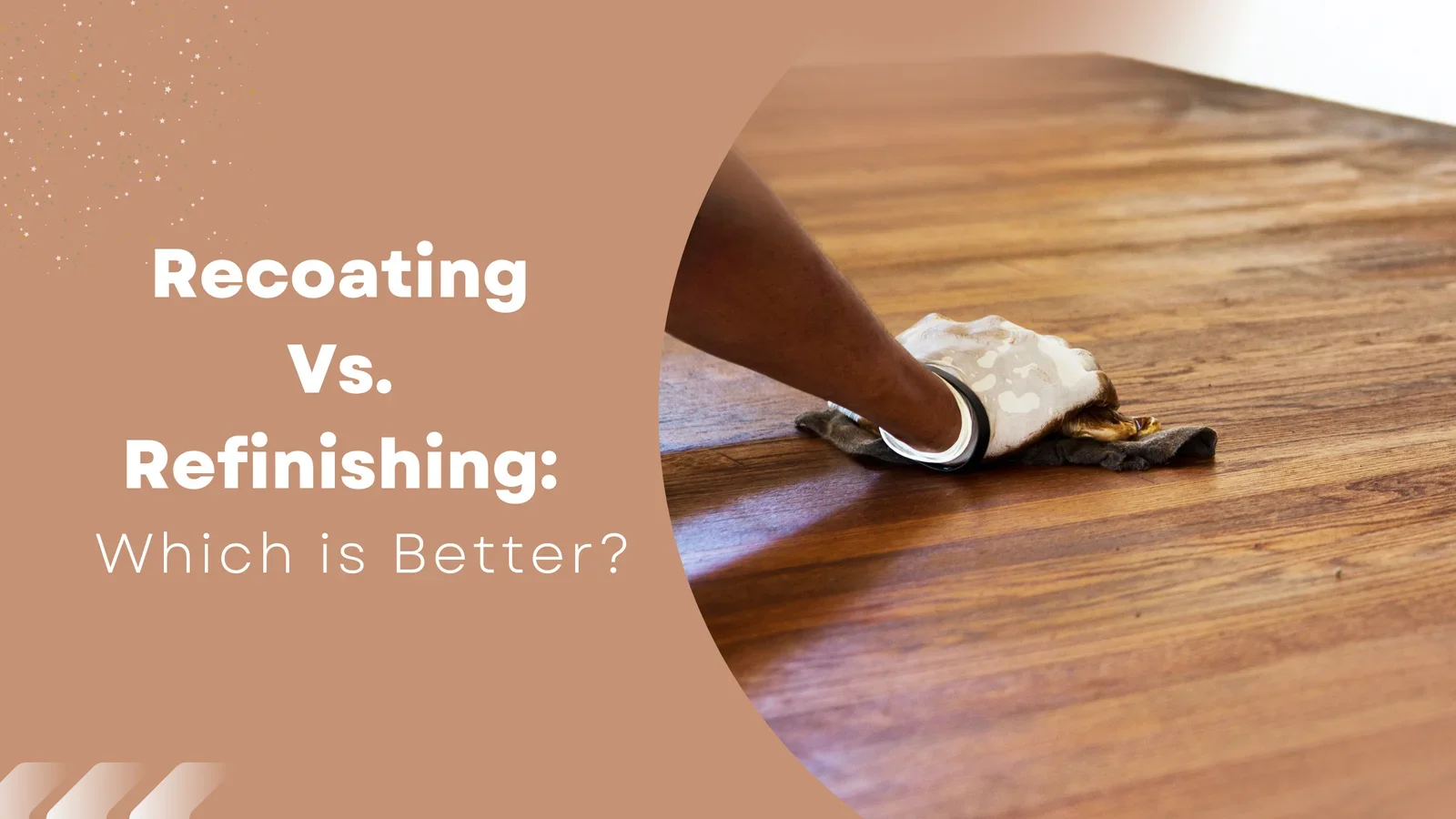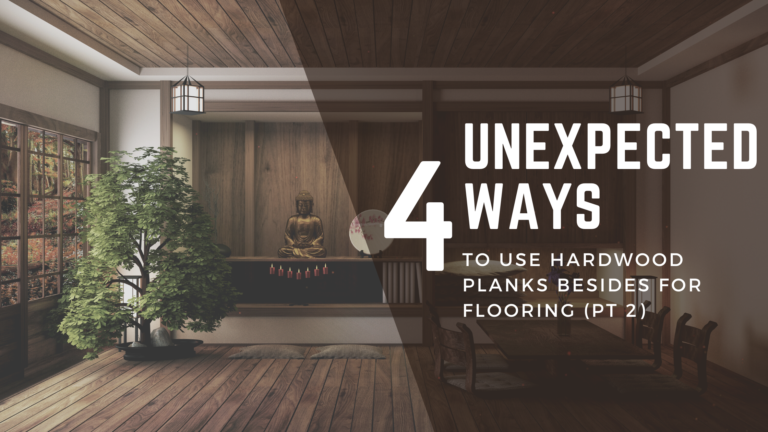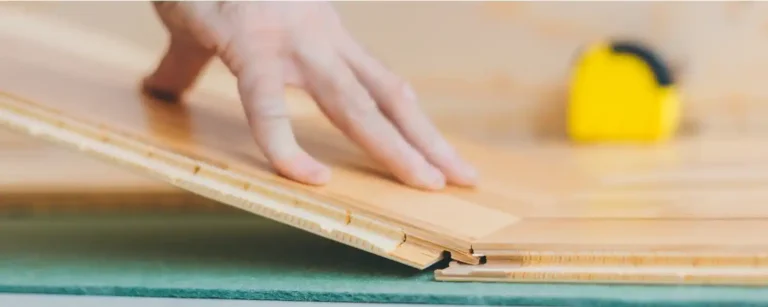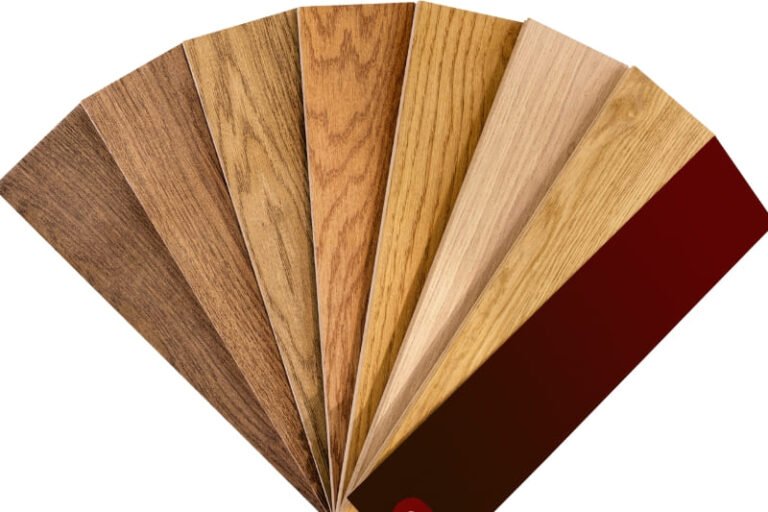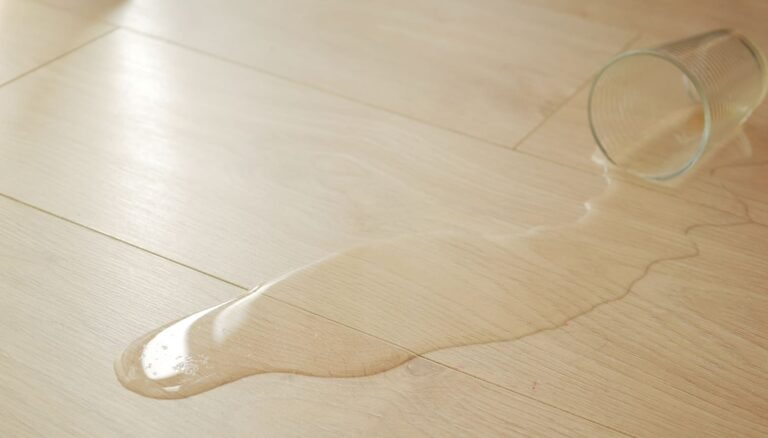Recoating Vs Refinishing: Which is Better?
So you’ve regularly maintained your Engineered Hardwood Floors but notice that there is still some wear and tear, what now?
Even with a regular cleaning routine, dents and scratches are inevitable, especially in high traffic areas. Over time, regular maintenance is not enough to keep your hardwood floors looking like new. This is where recoating or refinishing comes in.
Recoating and refinishing are two different processes which yield different results. Depending on what your goals are for your floors, you would choose to do one over the other, never both at the same time.
But which process is right for you? We’re here to break down the two processes and help you decide what’s best for you and your engineered hardwood floors.
What is recoating?
Recoating is the process of applying a fresh coat of finish to your hardwood floors. Rather than removing the topmost layer of finish, recoating is simply adding a new coat over this layer. This is a simpler and more cost effective process compared to refinishing because it takes less time and less work to complete.
Keep in mind that recoating only applies to hardwood floors that still have existing finish layers and not on hardwood floors that are worn down to the wood. This option is ideal when your hardwood floors look slightly dull and have minor scratches and dents on the finish surface. If the scratches and dents go further, into the wood itself, a recoat should not be the option selected.
Other reasons to select recoating is when you want to restore the look of your floors to their original beauty or even to extend their longevity. In fact, recoating should be considered part of your regular maintenance, it will extend the intervals between refinishing your floors.
Process of Recoating Engineered Hardwood
Here’s a simplified version of the recoating process –
The process to recoat hardwood floors begins with roughing up the existing coating or finish. This could be done multiple ways, such as lightly sanding, screening, or chemically etching the coating of the existing finish.
The next step is to then remove all specks of dust and apply a new coat of finish over the roughed up existing finish in the previous step. Allow the newly recoated floors to dry for 24 hours and that’s it.
A factor to keep in mind is that certain floors with finishes such as Teflon™, Scotchgard™, and floors that have been maintained with oil or wax soap would require a refinish and not a recoat.
What is refinishing?
“Refinishing” is another term hardwood floor owners should know about.
With refinishing, this is a process that helps reset hardwood floors and extend their longevity. This process is a little more complicated in that it requires removing the topmost layer of finish, usually done using a large, powerful sanding machine.
Process of Refinishing Engineered Hardwood
Here’s a simplified version of the refinishing process –
The process to refinish begins by using a floor buffer/sander to remove the topmost layer of finish from yours floors. “Finish” is a term used to describe the protective layer used to seal the otherwise exposed wood in flooring. Once that is removed, the exposed wood is then sanded down to even out the surface, remove dents, scratches, and even discolorations.
Once sanding is completed, stain is applied (if desired), then comes the finish. Three coats should provide plenty of protection, dry time must be allowed between each coat.
Refinishing is the better option when restoring uneven coloring, leveling from daily wear, deep scratches/dents, and finish changes – think of it as like a reset. The only real disadvantage of refinishing is that the process can often be time consuming and expensive; however it will leave your floors looking brand new at only a fraction of the cost.
What’s the difference? Recoating Vs Refinishing
So, let’s go over it one more time: recoating is the simpler, less expensive process that will allow you to continue enjoying your original floors. Refinishing is more time consuming and expensive but will leave you with what are basically new hardwood floors.
Some other differences such as machinery, treatment, and more may exist, please see the comparison chart below for convenience.
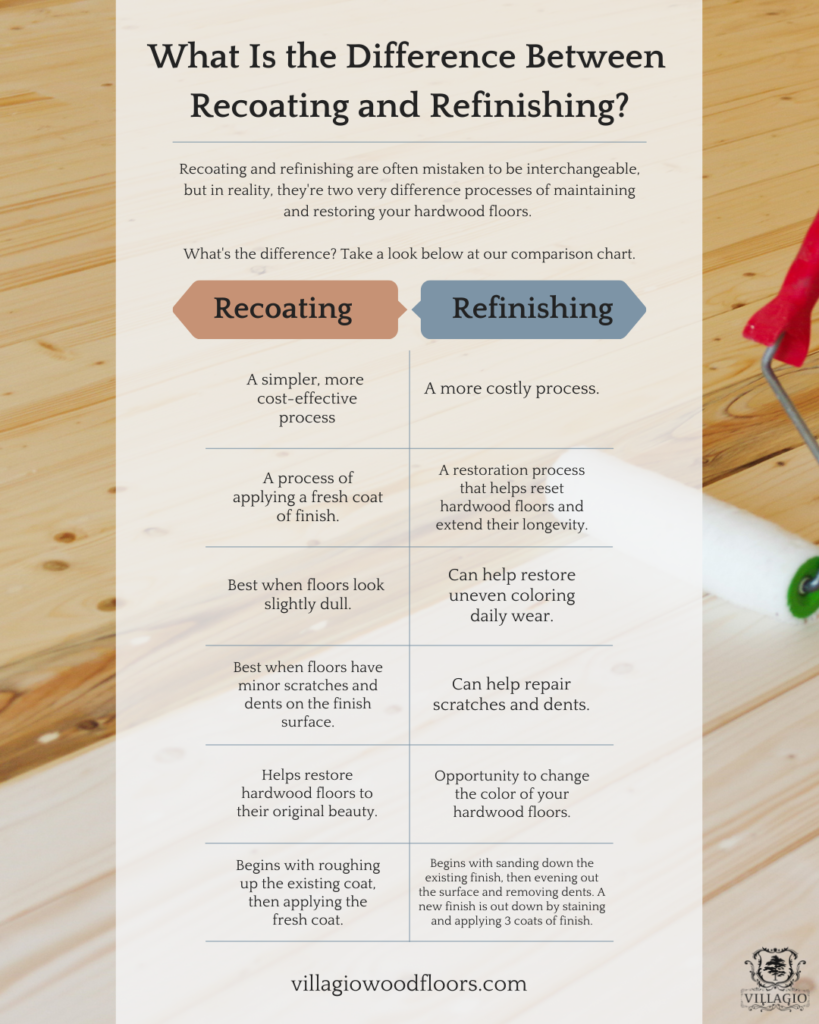
Final Thoughts on Recoating vs Refinishing
Depending on the condition of your hardwood floors and your budget, you may choose to recoat instead of refinish, and vice versa.
Regardless of which process you choose to liven up your hardwood floors, both recoating and refinishing should be left to professionals. Not only are professionals more equipped to handle the repairs but hiring a professional to recoat or refinish ensures that the repairs get done properly and well. It’s all about making your hardwood floors last longer. We hope this has been helpful. Good luck and enjoy your floors!
For more information and tips, be sure to follow us on Instagram, subscribe to our email list, and check out our other blogs.

